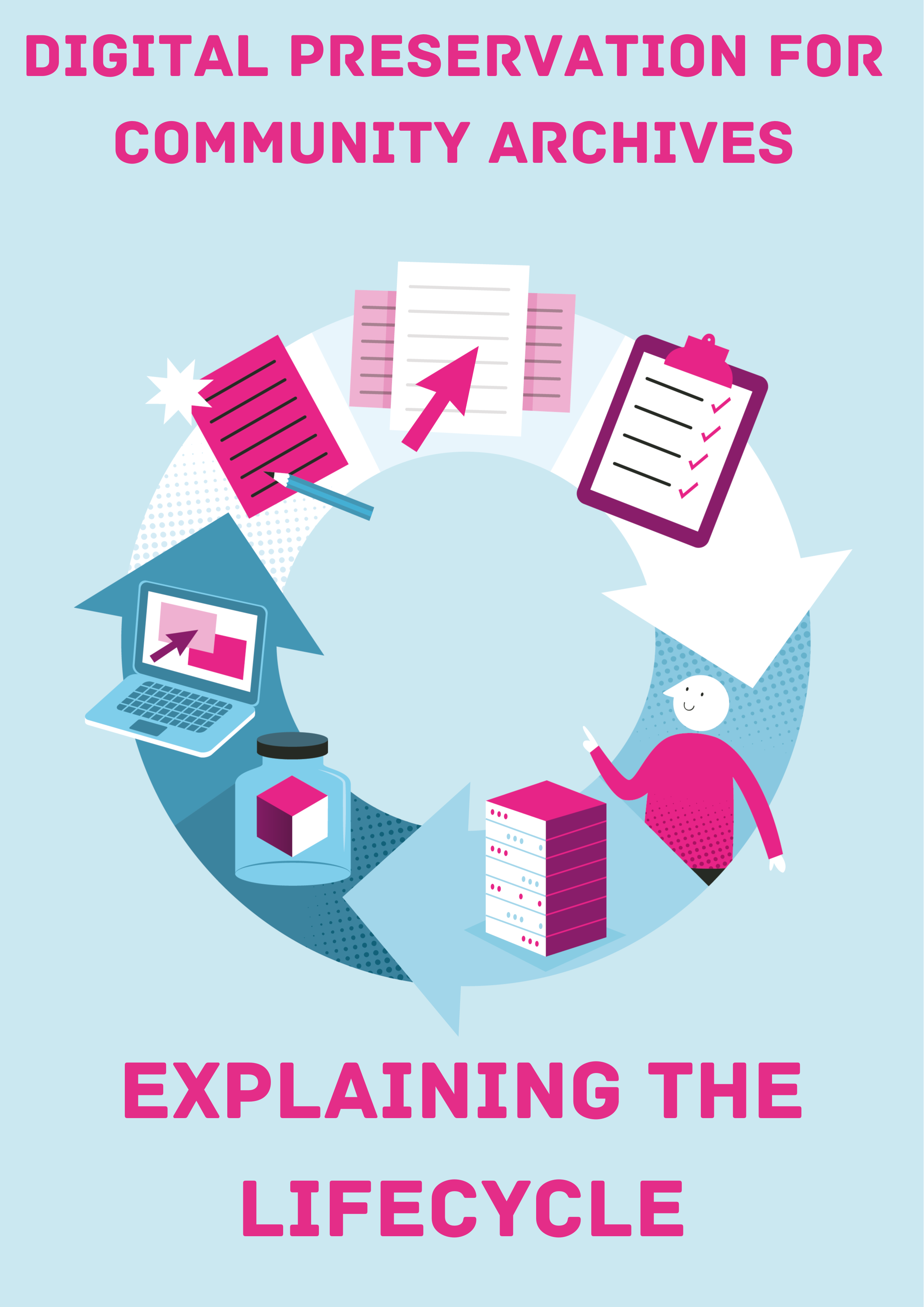|
|
Whether you are at the beginning of your digital preservation journey, or further down the road, knowing the lifecycle of a content that is part of your collections can be extremely useful. Knowing what part of the lifecycle you are working on can help you plan what tasks you want to work on next and how they relate to any future work you might do with your collections. Each section of the lifecycle is described below and aligned with the topics of the toolkit, so you know which section of the lifecycle you are working on. |
|
Lifecycle Section |
Toolkit Topic |
Description |
|
Creation / Collection |
This is the start of the lifecycle where a record comes into existence. The record may have been created by you (for example, an oral history recording or a digital photograph you’ve taken), or it might have been created by a donor who would like to add it to your collection. Once a digital record has been created, you will move to the next stage to decide if the record should become part of your collections. |
|
|
Selection |
The selection stage is where you decide which of the content you have (or have been offered) should become a permanent part of your collection. The most efficient way of doing this is creating a collecting policy. A collecting policy a document which sets out, what material you collect, what you don’t, and what criteria you use to make these decisions. The same criteria should be used every time you are offered, or are involved in creating, material. |
|
|
Description |
Describing your content is essentially collecting together the technical and descriptive information that you think will be most useful for understanding and providing access to your content. Your descriptions will be used to help you locate and work on your collections as well as to describe them to potential users so it’s important to collect and store the information that will be of most use. The same information should be collected about each record and collection. This information should be easily accessible to those working with your collections and, subject to access restrictions, included with any files you provide access to, whether access is online or by any other means. |
|
|
Management |
In terms of digital content, management means the range of tasks carried out that result in your collections remaining preserved and accessible. These tasks range from responsibility defining and planning to information gathering, system review and finance related tasks. Good collections management will reduce the risk of your collection becoming damaged, lost or inaccessible. |
|
|
Storage |
Once you have defined what your collection will contain and described the content, the next stage is to store both the collection, and the information documented about it contains. There are a wide range of storage mediums available. The medium you choose should be secure, stable and easily accessible by members of your group. Storage should be regularly reviewed and replaced if needed. |
|
|
Preservation |
Preservation of your collections involves the technical processes that combine with the management processes described above to keep your collections usable and accessible over time. This can include steps like making copies, using a preservation system, preserving your website or checking your files are still valid. Working through the levels of this toolkit will help you establish what the correct processes for your group are. |
|
|
Use |
Archive collections are usually collected by groups so they can be widely shared and accessed by other people. Digital records can be shared in a range of ways including an online digital exhibition or file sharing software. Before sharing any of your collections, you need to make sure you have the right ownership and/ or permissions in place to do so. |










































































































































